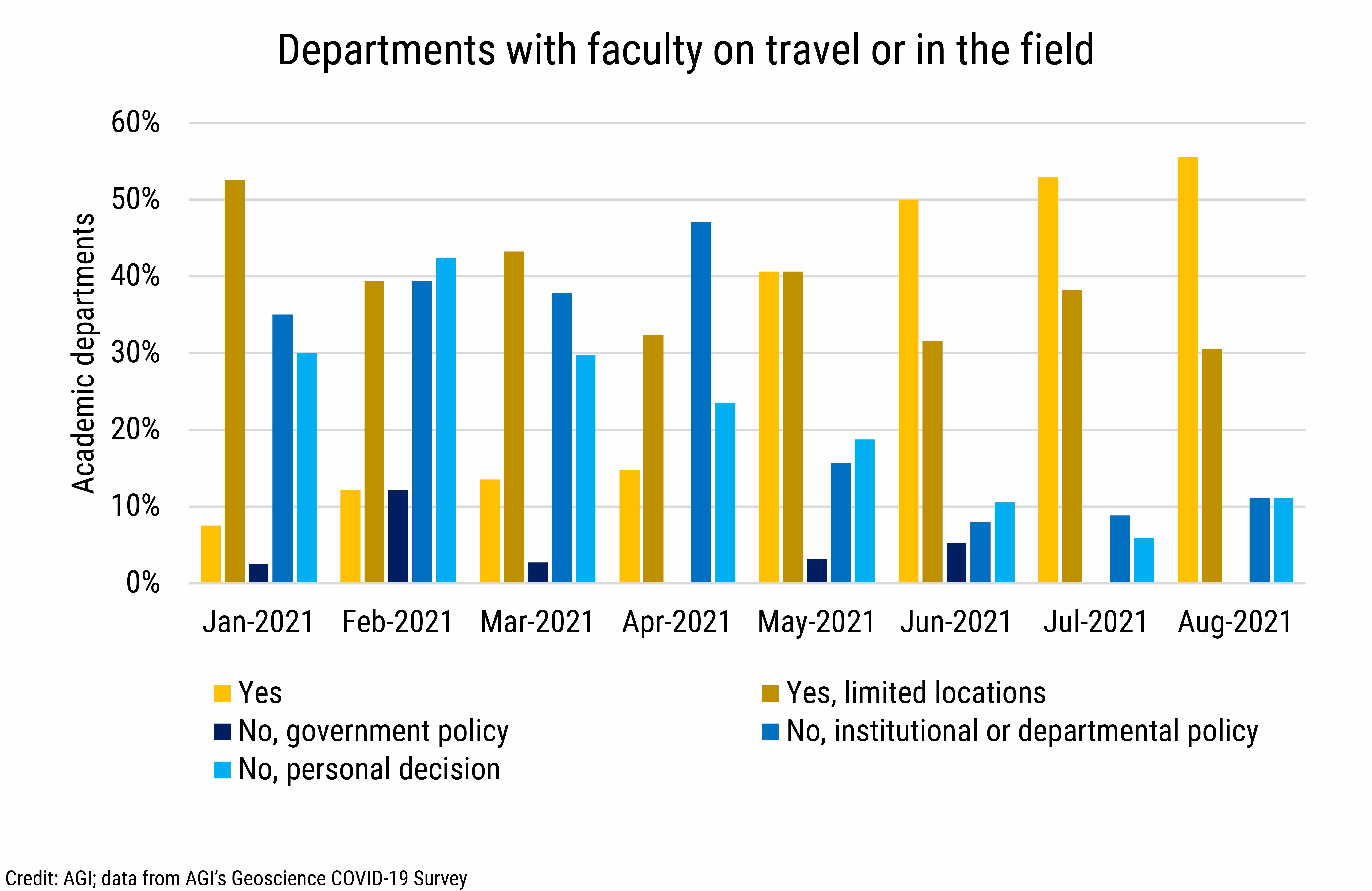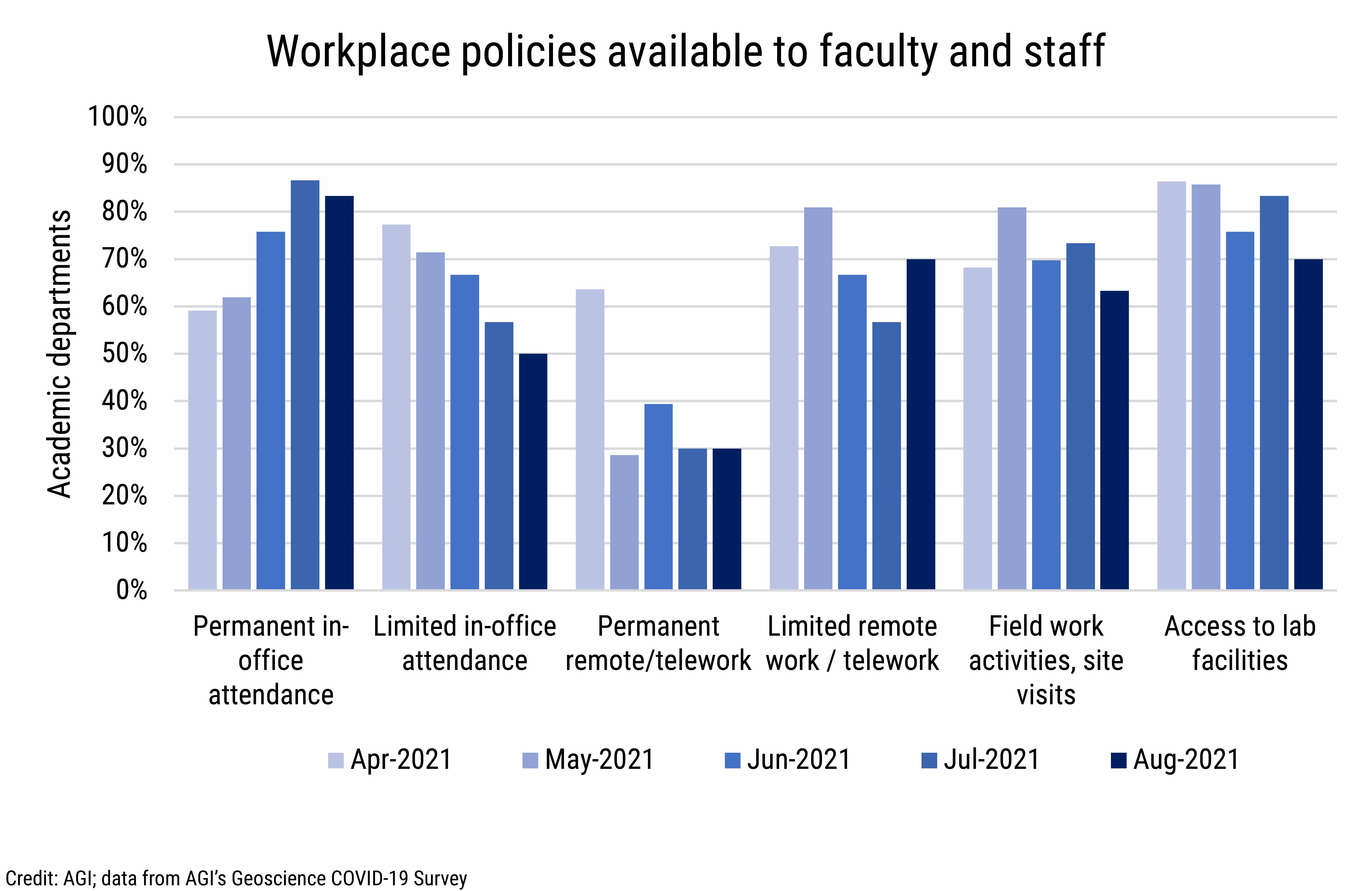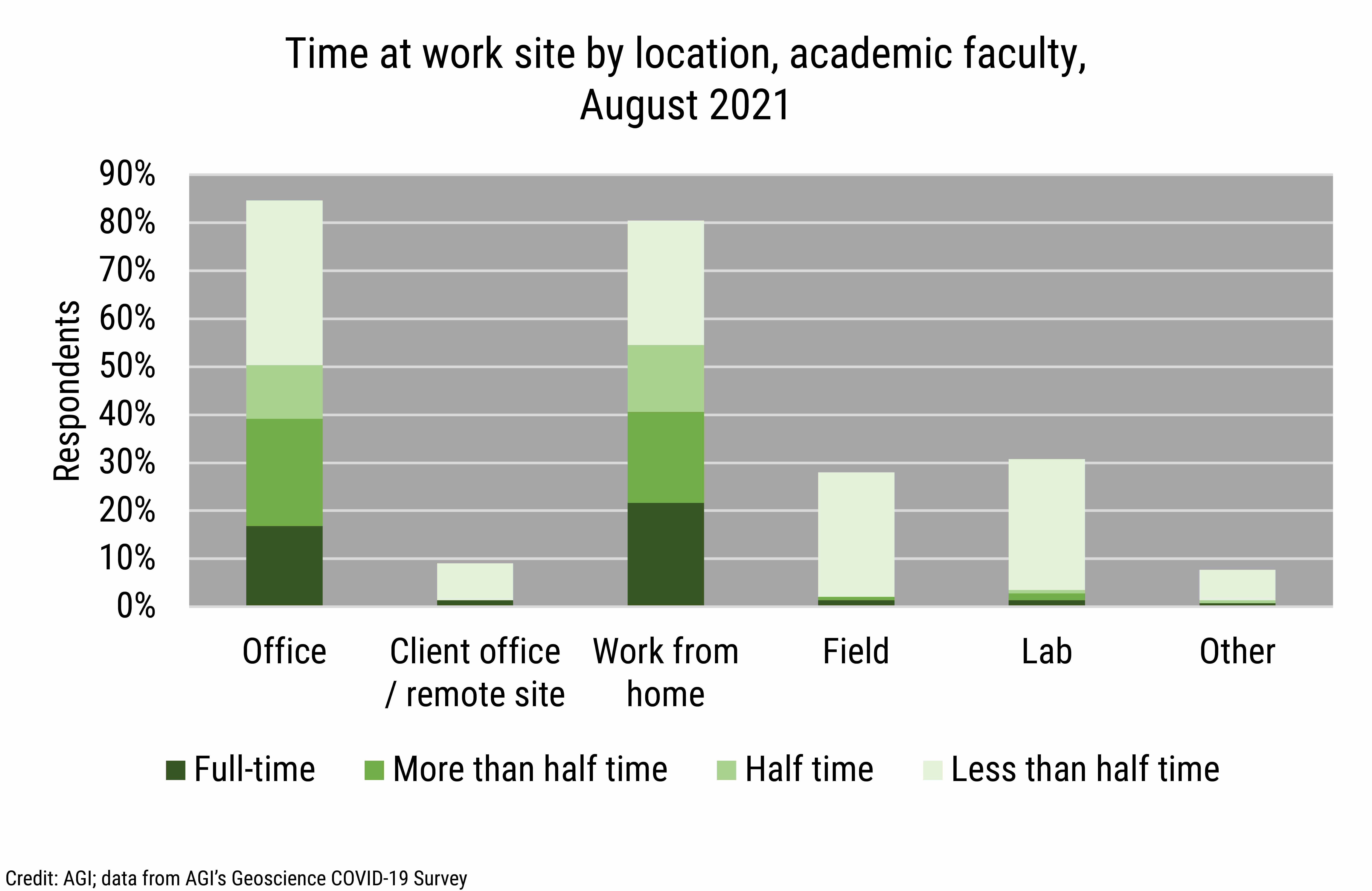Data Brief 2021-028 | October 15, 2021 | Written and compiled by Leila Gonzales and Christopher Keane, AGI
Download Data Brief
COVID-19 Impacts to Academic Department Operations, January to August 2021
Fewer than 27% of departments reported COVID-related impacts on
departmental staffing between January and August 2021. Between April and
August 2021, around 10% of departments reported hiring freezes and
leaving positions unfilled. During the same period, less than 10% of
departments reported layoffs, reduced hours, and benefits and salary
reductions. Active hiring picked up in May, with departments primarily
hiring to fill positions created by layoffs as well as new positions.

DB_2021-028 chart 01: Departmental staffing impacts (Credit: AGI; data from AGI's Geoscience COVID-19 Survey)
AGI
Active faculty searches peaked in February 2021 with 48% of departments
conducting at least one search. By August 2021, the percentage of
departments with active searches declined to 20%, representing a fairly
normal phasing of faculty search activity.
Travel and fieldwork by faculty was at a nadir in April 2021 with 48% of
institutions or departments having policies that prevented faculty
travel and fieldwork. Since then, most departments have reported that
faculty are free to travel with limited institutional restrictions.

DB_2021-028 chart 02: Departments with active faculty searches (Credit: AGI; data from AGI's Geoscience COVID-19 Survey)
AGI

DB_2021-028 chart 03: Departments with faculty on travel or in the field (Credit: AGI; data from AGI's Geoscience COVID-19 Survey)
AGI
In August 2021, 30% of departments offered permanent remote work for
their faculty and staff, and half of departments reported offering
limited in-office attendance. Meanwhile, over 80% of departments
allowed full-time in-office attendance in August 2021, up from 59% in
April 2021, and 70% of departments offered limited remote work in August
2021, up from 57% in July 2021. Over half of departments continued to
provide fieldwork and lab access to their faculty and staff.
While there has been an increasing percentage of faculty reporting that
they are working in the office, the percentage of faculty reporting
working from home has only slightly decreased from April 2021. In August
2021, most faculty were working both in the office and at home to
various levels, with 85% of faculty working from the office or on
campus, and 80% reported working from home. This multi-modal work
approach was evenly divided with equal number of faculty working in the
office at least half-time and working from home at least half-time.

DB_2021-028 chart 04: Workplace policies available to faculty and staff (Credit: AGI; data from AGI's Geoscience COVID-19 Survey)
AGI

DB_2021-028 chart 05: Work location of geoscience academic faculty (Credit: AGI; data from AGI's Geoscience COVID-19 Survey)
AGI

DB_2021-028 chart 06: Time at work site by location, academic faculty, August 2021 (Credit: AGI; data from AGI's Geoscience COVID-19 Survey)
AGI
Concerns
Departments reported that concerns moderately to extremely driven by the
pandemic have generally declined throughout the year. However, with the
spread of the Delta variant, concerns about workplace safety and
attracting students jumped in August 2021. Concerns over maintaining
staffing levels peaked in May 2021, thereafter declining at the same
time as active hiring picked up.

DB_2021-028 chart 07: Concerns of geoscience departments moderately to extremely driven by COVID-19 (Credit: AGI; data from AGI's Geoscience COVID-19 Survey)
AGI
Changes in recruiting for Fall 2021
Changes to the Fall 2021 recruiting cycle were reported by 56% of
departments, with approximately one quarter of departments indicating
that they would be focusing on online recruiting, 4% indicating that
they would be increasing their recruiting activities, and 8% indicating
that plans for Fall 2021 recruiting were still to be finalized as of May
2021. One-fifth of departments indicated other recruiting approaches,
including an increased focus on diversity, equity and inclusion outreach
activities, increased outreach to admitted students, and a focus on
graduate student recruiting.
We will continue to provide current snapshots on the impacts of COVID-19
on the geoscience enterprise throughout the year. For more information,
and to participate in the study, please visit:
www.americangeosciences.org/workforce/covid19
Funding for this project is provided by the National Science Foundation
(Award #2029570). The results and interpretation of the survey are the
views of the American Geosciences Institute and not those of the
National Science Foundation.